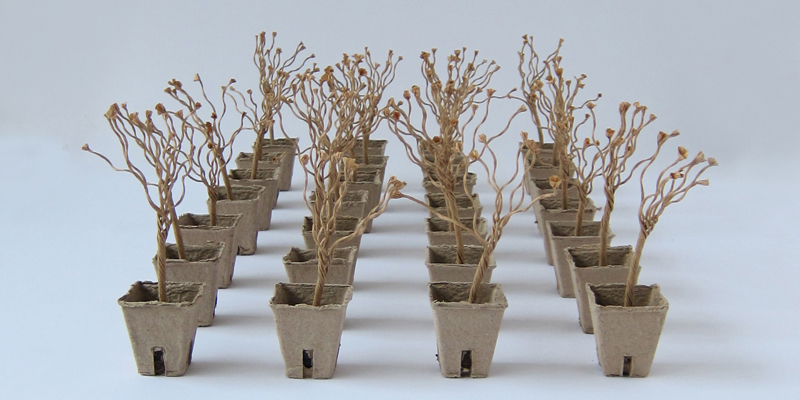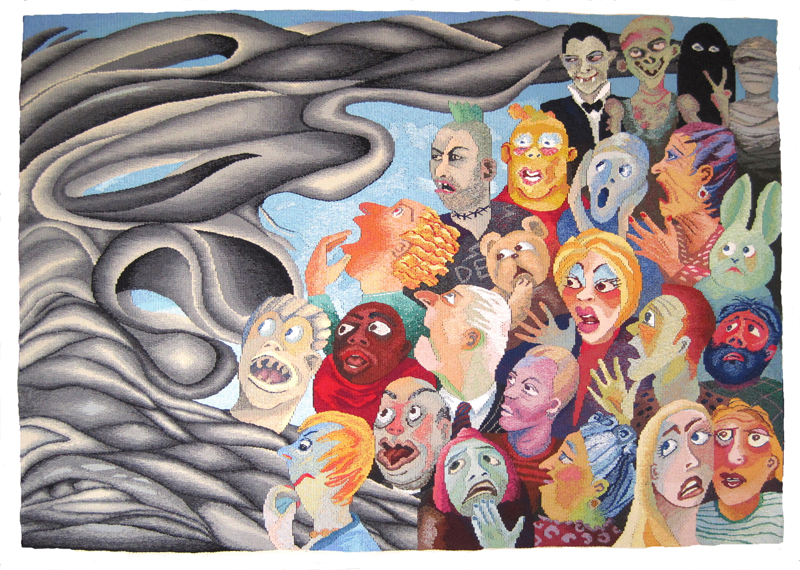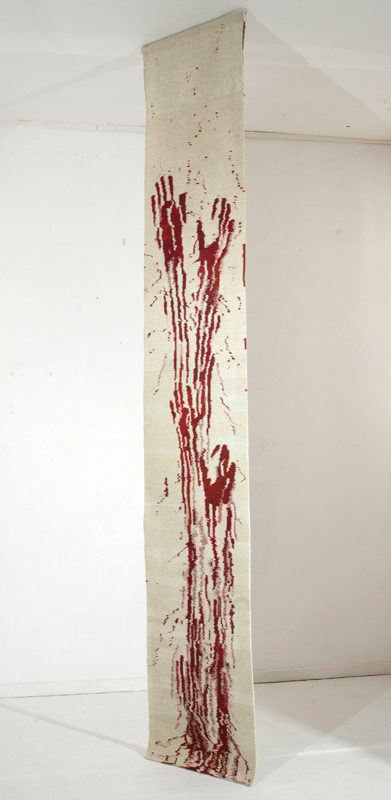
From 23rd April to 10th June 2015, the 5th edition of the International Textile and Fibre Art Triennial is on view at the Museum of Decorative Arts and Design in the Latvian capital of Riga. Since Latvia holds the EU Presidency this year, the theme “Diversity & Unity” was specifically selected to illustrate the national identities that exist within the EU and their positions in our globalised world. Some 60 artists participated in the opening ceremony. Many of the selected artists’ names are well known. Displayed to excellent effect in the “Arsenãls” Exhibition Hall, the works illustrate artistic quality and textile skills of a high standard. Large impressive tapestries and installations are popular.
The call for entries attracted a huge response. Eventually the panel of judges chose 85 pieces from 187 works submitted from 34 countries. The artists selected are from 29 different countries representing each of the five continents. Most of the artists are northern Europeans, with Latvia in the lead (14 objects), followed by the Netherlands (8 objects), Lithuania and Norway (7 objects each), Poland and Germany (6 objects each) and Japan (4 objects). All the other countries are represented by one to three objects.
The various national and cultural expressions are evident. Cultural differences manifest themselves in the wide range of artists’ approaches to “Diversity & Unity” – whether through harmony, exhortation, a little mischief or happiness. Norwegian artist Danuta Haremska plays on the theme in a wholly light-hearted way. Her work, “Similar, yet unique” – artificial flowers growing in papier-mâch pots – appears to be a tongue-in-cheek reference to EU regulations on standards. Japanese artist Misao Watanabe conveys simple joy and lightness by presenting “Happiness”, a word that is globally understood, against a bright yellow background. In addition, social, cultural and religious subjects are treated in different ways.
Networks which are part of the globalisation process play a central role. Several artists use the idea of “connection” in the very titles of their pieces. Other works express political relationships or statements, such as the “Fragile Wall” rug by Jānis Bankovičs from Latvia. The diverse colours and freshness seen on the face are complemented by a hammer and sickle on the reverse. Moreover, several artists deal with themes relating to war. Probably the most haunting and shocking object is “Abu Ghraib II” by Norwegian artist Unn Sønju. A number of further works tell of natural disasters or unspeakable catastrophes. At least two of these provoke deep emotions, illustrating the complex interrelations that exist throughout the world. They portray connections and relationships that unsettle the viewer, arousing fears that cannot be named. The unforeseen can happen any time, as shown in the “Out of the Blue“ tapestry by Christine Sawyer from the UK.
The artist’s invention, development and adaptation of new techniques go hand in hand with the creation of actual artworks. In parallel with a search for new techniques, we find that older and traditional techniques are being reintroduced. The current knitting trend is represented by one wall hanging and one installation. However, the objects produced in traditional techniques are presented in a new guise, such as the “Repeated“carpet collection by Lithuanian artist Severija Inčirauskaitė-Kriaunevičienė.
Generally speaking, the status of textiles and working with textiles has been enhanced in our society. I believe that this can be clearly perceived and experienced in this exhibition which is well worth a visit.
Ursula Karbacher, Curator, St. Gallen Textile Museum, Switzerland




